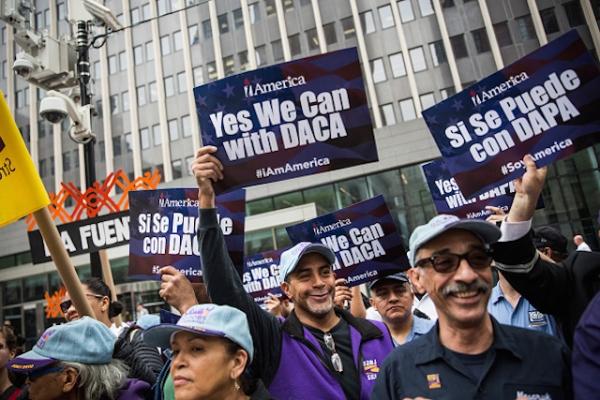DACA: How Many Divisions Does Judge Bates Command?
To begin: federal judges have no authority — none — to countermand an executive order issued by the president of the United States in the lawful pursuit of his executive function under Article Two of the Constitution. And yet, so out of line has the lesser judiciary — that is to say, every federal judge below the Supreme Court level — become that we have now arrived at this blatantly unconstitutional pass.
A federal judge on Friday ordered a total restart of the Deferred Action for Childhood Arrivals (DACA) program, in a hit to the Trump administration. The administration last year announced its plan to phase out the program, which provides a level of amnesty to certain illegal immigrants, many of whom came to the U.S. as children.
The order is not set to kick in right away, according to Politico, which notes that the government has until Aug. 23 to file a motion to appeal the ruling by U.S. District Judge John Bates. However, the judge denied a motion by the government to revise its earlier decision in April — which determined that the Department of Homeland Security’s decision to rescind DACA was “unlawful,” according to court documents.
Following that decision, the court issued a 90-day stay acknowledging that the “DHS could possibly remedy the decision’s inadequacies — at least in theory.” That period of time is now over, the judge said. “For the reasons explained below, the government’s motion will be denied,” the document read. “Although the Nielsen Memo purports to offer further explanation for DHS’ decision to rescind DACA, it fails to elaborate meaningfully on the agency’s primary rationale for its decision: the judgment that the policy was unlawful and unconstitutional.”
Bollocks. As I’ve frequently noted on this site, the lower federal courts are entirely creations of Congress, and thus subordinate to it. And they certainly have no authority over the executive branch, other than that which they have aggrandized unto themselves via Marbury v. Madison and other rulings of dubious constitutionality. The notion that the three enumerated branches of the federal government are “co-equal” is a polite fiction to disguise the fact that the Supreme Court (Article Three) is the last and least of them, and can be stripped of all jurisdiction except its enumerated powers any time Congress so ordains.
Read the rest from Michael Walsh HERE and follow link below to a related story/opinion:







Comments are closed.